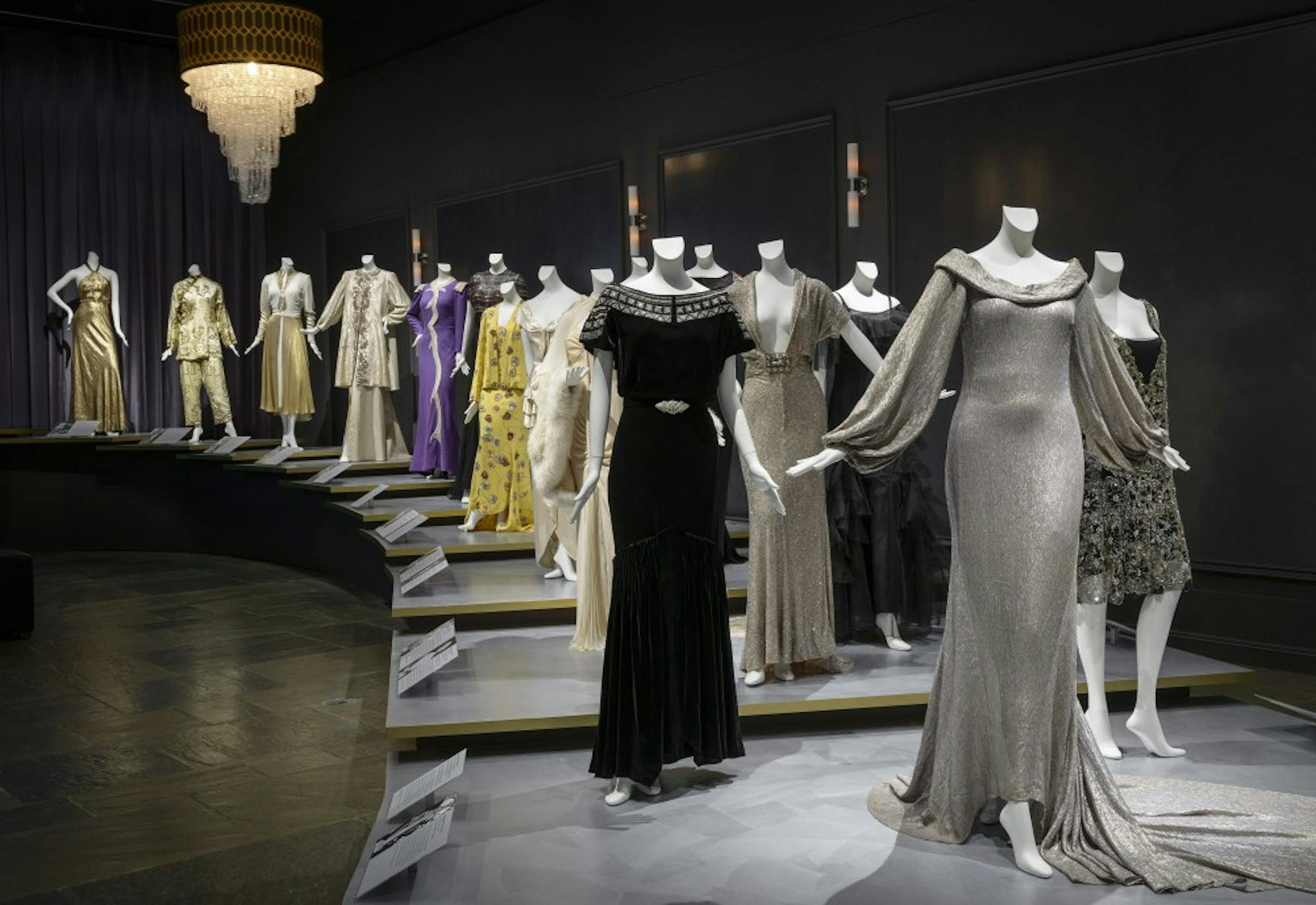Exhibit showcases Hollywood glamour

Upon entering Hollywood Glamour: Fashion and Jewelry from the Silver Screen at the Museum of Fine Arts, one is immediately transported to the luxurious, opulent world of 1930s and ’40s Hollywood. The exhibition turns the spotlight on the dresses and jewels worn in Old Hollywood. Before the ’30s, actresses would utilize their own wardrobe for films but the emergence of the costume designer altered the landscape of Hollywood. In addition to the dresses and jewels, a small collection of photographs, by Edward Steichen, are exhibited. The images capture the bold, captivating and magical presence of some of Hollywood’s finest actresses of the time.
The exhibit highlights over 10 dresses on an ascending podium that pronounces the glamour of each dress. The garments are primarily neutrals with an occasional pop of color. The purple Elsa Schiaperelli floor length gown, worn by Mae West in Every Day’s a Holiday (1937), is a bright addition to the selection of dresses. Shades of cream, silvery grays and black are most prominent in the exhibition. During this era, neutrals reigned supreme; white is shockingly absent. The wall text informs the viewer that crisp white and flashy jewels were difficult to capture for the black-and-white cinematographs of the time. Frequently, the stones of the flashy film jewelry were lightly coated with cold cream in order to be shot for the films.
The atmosphere of the exhibition—from somber, dark grey walls to romantic, chandelier lighting—creates an ambience akin to entering a movie theater. The cinematic quality of the exhibition is intensified by a ten minute long compilation video, created by the exhibit’s curators and shown on loop, which portrays some of the exhibited dresses as they first appeared to American audiences on the big screen. By watching the video on the furthest wall in the room, one is able to appreciate the way the dresses and gowns gracefully followed the curves and lines of the actresses’ bodies as they flirted, seduced and enchanted not just the film’s cast, but also the audience.
The exhibit enables the viewer to discern the relationship between European and American fashion in this pivotal time right before World War II. There was an undeniable relationship between European—particularly French—couturiers, and the American designers of Los Angeles. Many designers trained with the leading couturiers of Paris but upon returning to the States and creating for the starlets of Hollywood, they had to adapt to the American spirit.
The fissure between the Parisian and Hollywood design world is exemplified by the working relationship of Coco Chanel and the Polish-American film director Samuel Goldwyn. The wall text reveals that the duo worked together for three films, including The Greeks Had a Word for Them (1932) and Tonight or Never (1931). However, the working relationship quickly fizzled, as Chanel’s designs were considered far too subdued for the opulent, glitzy world of 1930s and 40s Hollywood.
As a complement to the dresses, the jewels and baubles of the time are also displayed in a dazzling assortment of sparkling diamonds, shining silver and brightly jeweled gems. The jewelry reveals the era’s indulgence in excess. However, the opulent jewelry and accessories did have a utilitarian side. Many of the necklaces were versatile as they could be taken apart to create separate stand-alone pieces such as bracelets, brooches, dress clips and rings.
Actresses were also fond of rings with large star sapphires. The largest documented was 181.82 carats and belonged to Mary Pickford, although the one exhibited is smaller in size—at only 50 carats—and was worn by Myrna Loy. The jewelry of the exhibition belies the industry’s need for decoration and ornamentation.
Hollywood Glamour turns back the wheels of time and recreates a world once lived. This is a world where luxury “existed before the era of budgets and economy,” as described the legendary costume designer Edith Head.
The exhibition will be on view until March 8.


Please note All comments are eligible for publication in The Justice.